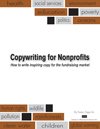Has your fundraising and member acquisition efforts fallen into a routine? Are you essentially sending out the same stuff over and over to your direct mail list and email list?
 There’s an aspect of repetition that’s fine: When you have a control … use it.
There’s an aspect of repetition that’s fine: When you have a control … use it.
On the other hand, even a smooth running engine needs tuning and adjusting on a regular basis.
That’s why you do regular testing on your fundraising communications.
In fact, direct response marketing demands on-going testing. That’s part of the secret. That’s why testing is fundamental to your fundraising.
What to test
• Outer envelope. First step is to get it opened so the letter can be read. Test a different image, color versus black and white, full envelope design, plain envelope, teaser and no teaser, and possibly special faux envelopes for true emergencies. Also test using a different size of carrier envelope.
• Add a lift note or buck slip. Often times this one simple change can do the trick. Related variations are to add a post-it note or a handwritten note on the letter.
• New copy or a variation of the copy. This ranges from a completely new letter to a new headline and lead. It can even include testing a shorter letter along the same lines, or adding more detail for a longer letter. Do NOT assume that just because you never read a longer letter that no one else does. Many incredible, long-standing controls are longer letters. Find out what works best for your fundraising campaigns.
• Drop the brochure. Especially in acquisition, a brochure or other enclosure usually depresses response. Yet within some niches (e.g., arts and culture), they often work well. In any event, it is easy to test. And of course you can also test a totally different approach to your brochure.
• Make me a better offer. First off, be sure to ASK. I’ve read many a letter where they never ask me to donate or do anything else. Make it CLEAR what you want your readers to do. Oh, and also make it clear what they get for joining or making a donation. Next find a way to strengthen your offer. Add an interactive device. Tie the offer to an online poll they can easily respond to. If you use freemiums or premiums test variations of them.
• Add urgency. Whenever possible find a way to add a deadline. Give readers a good reason to respond as soon as possible. And explain the consequences if they don’t. Do they lose out on something? Does another person get diagnosed with a disease with no hope for a cure? Does another nonprofit close their doors because your foundation ran out of grant money – and who else is hurt when they close their doors? Deadline and impact. Spell it out.
• New reply device. When was the last time you overhauled your reply device? Many people glance at that first to get the gist of what you’re asking. If it looks okay, then they start on the letter (and the starting point is usually the P.S.). Some donate without reading. Can your reply device do the job solo?
• Add a coin to a package. Use a price point to tie the coin to the letter copy.
• Use handwriting (actual or QUALITY simulated) on the OSE; or inside on the letter. But I have a strong preference for “real” handwriting.
• Use a live stamp on the carrier envelope. Consider going first class.
• Gift amounts and gift strings. When was the last time you tested variations of these?
• Signer of the letter or email.
• Email subject line. More ideas on subject lines here.
• When a letter or email is sent. Timing is everything, as the saying goes. Email can get down to the day of the week and the time of day. It’s also impacted by the time zone of the recipient.
• Flexible payment terms. An association could test this for membership dues.
Those are at least 15 ideas on what you can test to nudge a higher response rate or a higher average gift value out of your marketing and fundraising campaigns. And even a fraction of a percent increase can add up to an impressive amount on your bottom line.
And don’t try to test too much at once. When you vary multiple elements you’re never quite sure which change did the trick (or conversely, which change hurt response). Have a control and send it out to a statistically significant portion of your file. Then send the test version to the other file segment.
Keep your fundraising and marketing machine well-tuned. Keep testing.
What has worked best for you when testing your direct response appeals? What are you testing in your fundraising lab?
.
————-
Photo Credit: “TennesseeWesleyanCollege” via PhotoPin.com

{ 1 trackback }
{ 1 comment }
I received this question from an esteemed colleague, Erica Waasdorp (President) of ADirectSolution.com … “I was wondering if you ever have people ask you about the typeface? Maybe increase the type a bit to make it slightly easier to read?”
I wish I did receive that question. Erica knows how important readability is to any direct mail letter or email.
Font choice and size is another element to consider testing. For direct mail I would never go less than size 12 for the body copy; and I strongly recommend a serif font such as Georgia. Try testing 13 or 14 as well.
For email I don’t recommend going less than 10. Depending on the font choice it’s often best to go larger, even with a sans serif font such as Arial.
Folks in their 20’s and 30’s won’t object to the ease of a larger font. Folks in their 40’s and above will be grateful for the ease of a larger font. Larger is good. And don’t forget to add in extra space between the lines when possible (i.e., line spacing greater than “single’).
Thanks, Erica for the insightful question!
Comments on this entry are closed.